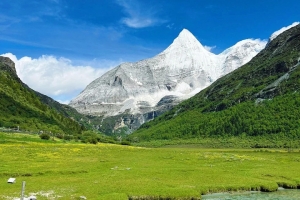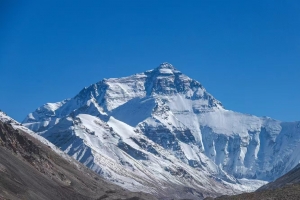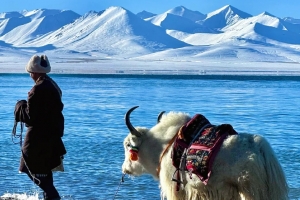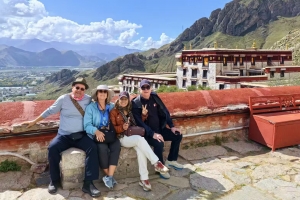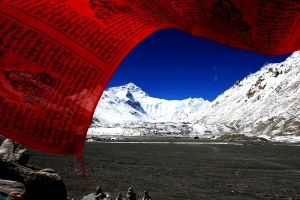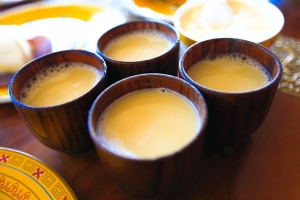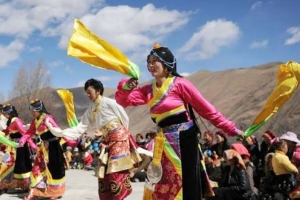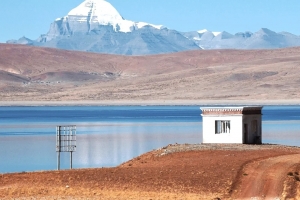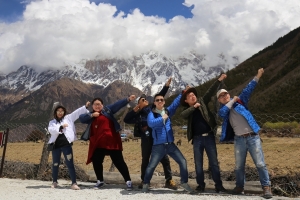The Tibetan antelope – known locally as the chiru – is one of the high plateau’s most elegant and enigmatic residents. For international travelers, spotting a herd of chiru running free across a vast highland plain is one of those wildlife experiences. This article explains who the chiru are, why they matter ecologically, when and where you’re most likely to see them, the history and aftermath of the shahtoosh trade, and practical travel tips so your encounter is safe and unforgettable.
Who Are the Chiru? Basic Facts and Features
The Tibetan antelope (Pantholops hodgsonii) is a medium-sized bovid specially adapted to life on the world’s highest grasslands. Males stand roughly 80–85 cm at the shoulder and weigh around 35–40 kg; females are slightly smaller. Adult males wear long, straight horns that gently curve inward at the tips, while females are hornless. Their coats change seasonally — richer tan and darker markings in summer, paler in winter — and they have a compact, muscular build with well-proportioned limbs built for speed and endurance on thin-air plains.
One of the chiru’s most remarkable physiological features is an adaptation for breathing and surviving at extreme altitudes: they possess a high concentration of red blood cells and specialized nasal structures that help retain heat and moisture, enabling movement and migration between 4,600 and 6,000 meters above sea level. True to their design, chiru are fast—capable of sprinting to escape predators in the vast openness of the plateau.
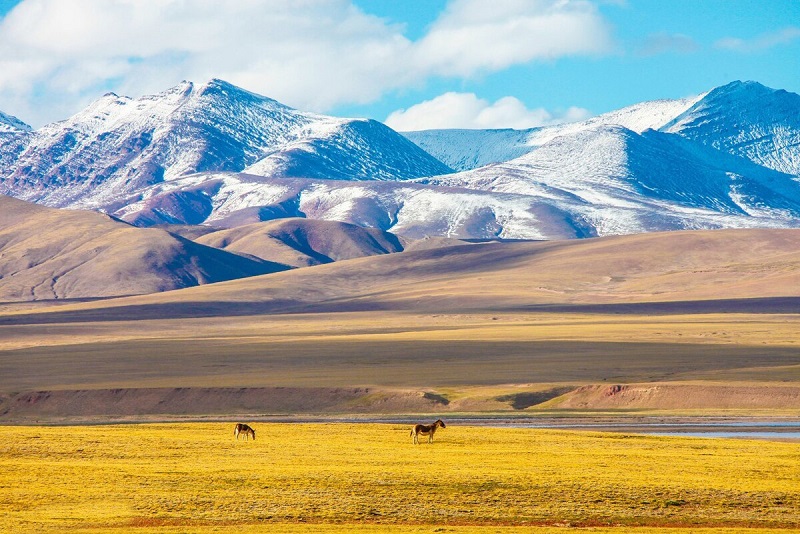
Tibetan antelopes in Hoh Xil
Tibetan Antelope’s Behavior, Herds and Migration
Chiru are gregarious and migratory. Outside the breeding season you’ll find them in groups ranging from a few dozen to hundreds or even thousands; they forage across alpine meadows, salt flats and high desert grasslands. Females undertake spectacular seasonal migrations to traditional calving grounds — a fixed route repeated generation after generation — leaving wintering ranges in spring and returning in late summer or autumn. Mating generally occurs in late autumn and early winter, and females typically give birth to a single fawn in June or July. These mass movements are among the planet’s most impressive ungulate migrations and are driven by forage availability, snowline and long-established migratory paths.
Why the Chiru Matter: Ecology and “Water Tower” Functions
Chiru are more than a charismatic species: they play an essential role in the fragile ecology of the Tibetan Plateau. Grazing patterns of large wild herbivores, including chiru, shape grassland structure, seed dispersal and nutrient cycling. In some conservation narratives the plateau — particularly areas like Sanjiangyuan (the headwaters region of the Yangtze, Yellow and Mekong rivers) — is described as a “water tower” for Asia, and the health of its grasslands and wildlife contributes indirectly to downstream hydrology and ecosystem resilience. In short: protecting chiru contributes to protecting a wider, cascading ecological system.
From Millions to Near Extinction – And Back
Historically, chiru numbers were vast; some historical estimates suggested populations on the order of a million. But in the late 20th century demand for their ultra-fine underfur led to catastrophic declines. The underfur — known in trade as shahtoosh — can only be obtained by killing the animal (it takes the down of several individuals to make one shawl), and illegal poaching drove populations down sharply by the 1980s and 1990s.
Thanks to strong domestic and international conservation measures, anti-poaching enforcement, and large protected areas, the species has made a notable recovery. By the 2010s chiru numbers had risen substantially, with modern estimates documenting population recovery into the hundreds of thousands and a trend that caused the IUCN to reclassify the species from “Endangered” to “Near Threatened.” This recovery is a rare conservation success story, though threats remain.
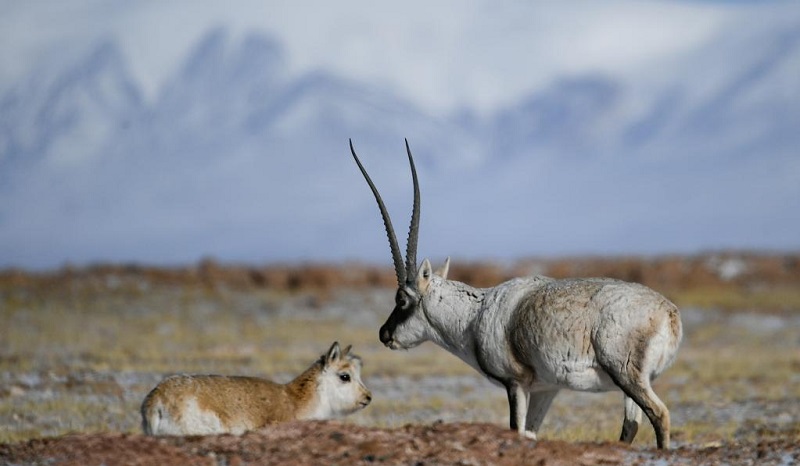
The Shahtoosh Trade: What Travelers Should Know
Shahtoosh (literally “king of wools”) is the ultrafine underfur from chiru, historically prized for its softness and warmth and made into luxury shawls with astronomical prices. Because production requires the death of several animals per shawl, international law and multiple nations have banned trade in shahtoosh for decades. CITES limits and national protections make the buying, selling or transporting of shahtoosh and related products illegal in many countries — and penalties can be severe, including heavy fines and imprisonment. Poaching for shahtoosh was the principal driver of the chiru’s population crash; buying or possessing such items today supports criminal trade and undermines conservation. Do not purchase or attempt to bring shahtoosh home.
Where to See Chiru — Best Regions and Viewing Seasons
If you’re planning wildlife-focused travel to the Tibetan Plateau, some places give you the best odds of seeing chiru:
- Hoh Xil (Qinghai Province) — A key calving ground and a protected core of chiru habitat; many chiru migrate to Zhuonai Lake and surrounding lakes to give birth in late spring/early summer. Watching newborns and mothers in June and July is a highlight of the wildlife calendar.
- Qiangtang (Northern Tibet) — Vast grasslands where chiru roam in summer and autumn; the plateau’s scale is especially impressive here.
- Sanjiangyuan (Three-River Source region, Qinghai) — An ecological hub where chiru, Tibetan wild yak and other plateau species persist.
- Altun Mountains and surrounding nature reserves (Xinjiang / NW Tibet) — Additional populations and migration corridors cross these ranges.
Timing matters: if your primary goal is to see large numbers gathered for calving, late spring into summer (May–July) is prime for Hoh Xil; for broader Qiangtang sightings and returning herds, later summer and early autumn are excellent. Always remember that wildlife movements are influenced by weather and forage and can vary year to year.
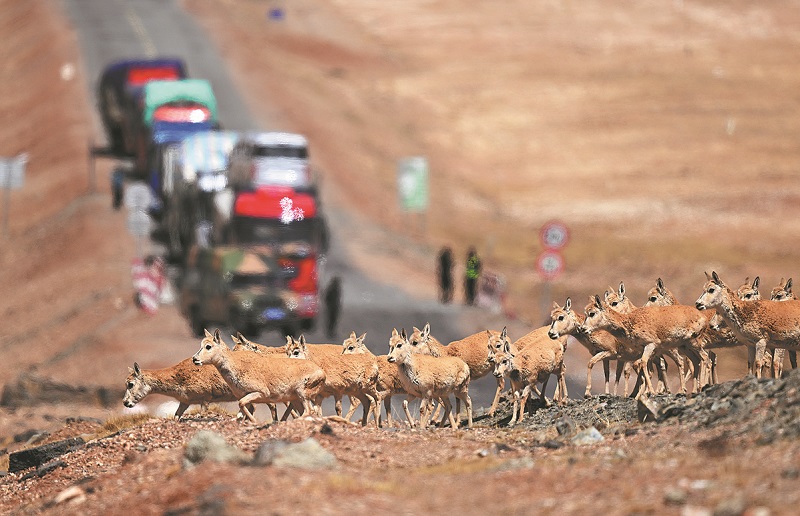
Tibetan antelopes
Tibetan Antelope’s Protected Areas and Conservation Measures
China has established several large reserves specifically to protect chiru and other plateau species: Hoh Xil (Kekexili) was created to conserve calving grounds, and larger regional reserves such as Qiangtang and Sanjiangyuan were drawn to maintain habitat connectivity. These protected areas are essential, but they face ongoing pressures from livestock grazing expansion, infrastructure, and climate impacts that can shrink and fragment chiru habitat. Continued enforcement against poaching, scientific monitoring of populations and habitat restoration are all part of the ongoing conservation strategy.
Responsible Viewing: Do’s and Don’ts for Travelers
Seeing chiru in the wild is a privilege — one that depends on responsible behavior. Here’s how to minimize your footprint and avoid harming animals or risking legal trouble:
- Do keep your distance. Use a telephoto lens; never approach chiru or calves. Sudden movement or noise can cause herds to stampede, stressing animals and risking injury.
- Don’t chase or circle animals. This can separate calves or provoke flight.
- Do follow local reserve rules and the guidance of trained guides or rangers. Many protected areas regulate vehicle access and viewing distances — respect them.
- Don’t buy wildlife products. Horns, furs, skulls, and shahtoosh are illegal to trade or transport in many countries and can result in hefty fines or jail time. Carry receipts and necessary documentation for permitted items and be transparent at customs.
- Do use binoculars and a camera with a tele lens. A lighter telephoto lens helps you stay mobile while capturing close-up images without disturbing wildlife.
Practical Travel Tips for High-Altitude Wildlife Watching
- Acclimatize slowly. The Tibetan Plateau is very high. Spend a day or two resting at intermediate altitude (Lhasa or a similar city) to reduce risk of altitude sickness.
- Battery care. Cold drains batteries quickly. Keep spare batteries warm in inner pockets and carry several spares.
- Clothing and gear. Warm layers, a windproof shell, gloves that allow camera operation, sunglasses and sun protection are essential. Temperatures can swing dramatically between day and night.
- Respect local communities and pastoralists. Many plateau areas are home to nomadic and semi-nomadic herders who have coexisted with wildlife for generations; seek permission when crossing pastoral lands and be mindful of livestock and grazing patterns.
- Travel with knowledgeable guides. Experienced local guides increase your chances of meaningful, low-impact encounters and help you navigate permits, logistics and cultural etiquette.
Final Notes for Travelers
If you plan a trip to see chiru, target Hoh Xil in late spring/early summer for calving spectacles or the Qiangtang grasslands in late summer and autumn for wide-open sightings. Book with operators who prioritize conservation and local partnerships, arrive prepared for high altitude, and bring patience: nature on the plateau moves on its own schedule and rewards travelers who move slowly, respectfully and with curiosity.
Want to See Chiru with a Responsible Local Travel Company?
Journey2tibet expertly guided tours across the Tibetan Plateau, including Hoh Xil and Qiangtang routes designed to maximize wildlife encounters while minimizing impact. If you want help planning a responsible trip to see the Tibetan antelope — with local guides, reserve permits and practical high-altitude advice — Journey2tibet can create a tailor-made itinerary that respects both animals and communities.

